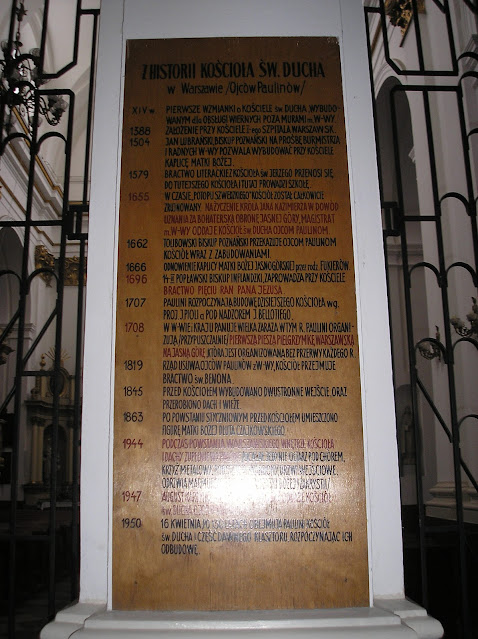Kościół św. Ducha w Toruniu jest późnobarokową świątynią wzniesioną w połowie XVIII wieku jako ewangelicki zbór. Jego powstanie ściśle wiąże się z toruńskimi zamieszkami religijnymi z 1724 roku, w wyniku których miejscowi luteranie utracili posiadany wcześniej kościół Najświętszej Marii Panny. Pozbawieni świątyni na Starym Mieście, dopiero w 1754 roku uzyskali zgodę królewską na zbudowanie prostego domu modlitwy, który z zewnątrz nie miał przypominać kościoła. Autorem zrealizowanego projektu był Effraim Schroeger, który później zasłynął jako czołowy architekt polskiego klasycyzmu. Zgodnie z postawionymi warunkami, świątynia nie posiadała wieży - obecną wzniesiono dopiero w ostatnich latach XIX wieku. Kościół aż do 1945 roku służył protestantom, następnie został przejęty przez jezuitów i stał się kościołem akademickim. W latach osiemdziesiątych XX w. świątynia była miejscem spotkań antykomunistycznej opozycji. Wewnątrz zachowały się elementy wyposażenia w stylu rokoko, wśród których na szczególną uwagę zasługuje ołtarz główny oraz drzwi do zakrystii wykonane w 1756 r. w technice intarsji, polegającej na tworzeniu barwnych motywów dekoracyjnych wyłącznie z różnych gatunków drewna.
Church of St. Ducha is a late-Baroque church erected in the mid-18th century as an Evangelical church. Its creation is closely related to the religious riots in Toruń in 1724, as a result of which the local Lutherans lost the previously owned church of the Blessed Virgin Mary. Deprived of a temple in the Old Town, it was only in 1754 that they obtained royal permission to build a simple house of prayer, which was not supposed to resemble a church from the outside. The author of the completed project was Effraim Schroeger, who later became famous as a leading architect of Polish classicism. According to the conditions, the temple did not have a tower - the present one was erected only in the last years of the 19th century. The church served Protestants until 1945, then it was taken over by the Jesuits and became an academic church. In the 1980s, the temple was a meeting place for the anti-communist opposition. Inside, elements of rococo style furnishings have been preserved, among which the main altar and the door to the sacristy, made in 1756 in marquetry technique, consisting in creating colorful decorative motifs exclusively from various types of wood, deserve special attention.
Kirche St. Ducha ist eine spätbarocke Kirche, die Mitte des 18. Jahrhunderts als evangelische Kirche errichtet wurde. Ihre Entstehung ist eng mit den religiösen Unruhen in Toruń im Jahr 1724 verbunden, in deren Folge die hiesigen Lutheraner die frühere Kirche der Heiligen Jungfrau Maria verloren. Einem Tempel in der Altstadt beraubt, erhielten sie erst 1754 die königliche Erlaubnis, ein einfaches Bethaus zu errichten, das von außen keiner Kirche ähneln sollte. Autor des vollendeten Projekts war Effraim Schroeger, der später als führender Architekt des polnischen Klassizismus berühmt wurde. Gemäß den Bedingungen hatte der Tempel keinen Turm - der jetzige wurde erst in den letzten Jahren des 19. Jahrhunderts errichtet. Die Kirche diente den Protestanten bis 1945, dann wurde sie von den Jesuiten übernommen und wurde eine akademische Kirche. In den 1980er Jahren war der Tempel ein Treffpunkt der antikommunistischen Opposition. Im Inneren sind Elemente der Einrichtung im Rokokostil erhalten geblieben, darunter der Hauptaltar und die Tür zur Sakristei, die 1756 in Intarsientechnik hergestellt wurden und darin bestanden, farbenfrohe dekorative Motive ausschließlich aus verschiedenen Holzarten zu schaffen, verdienen besondere Aufmerksamkeit.













